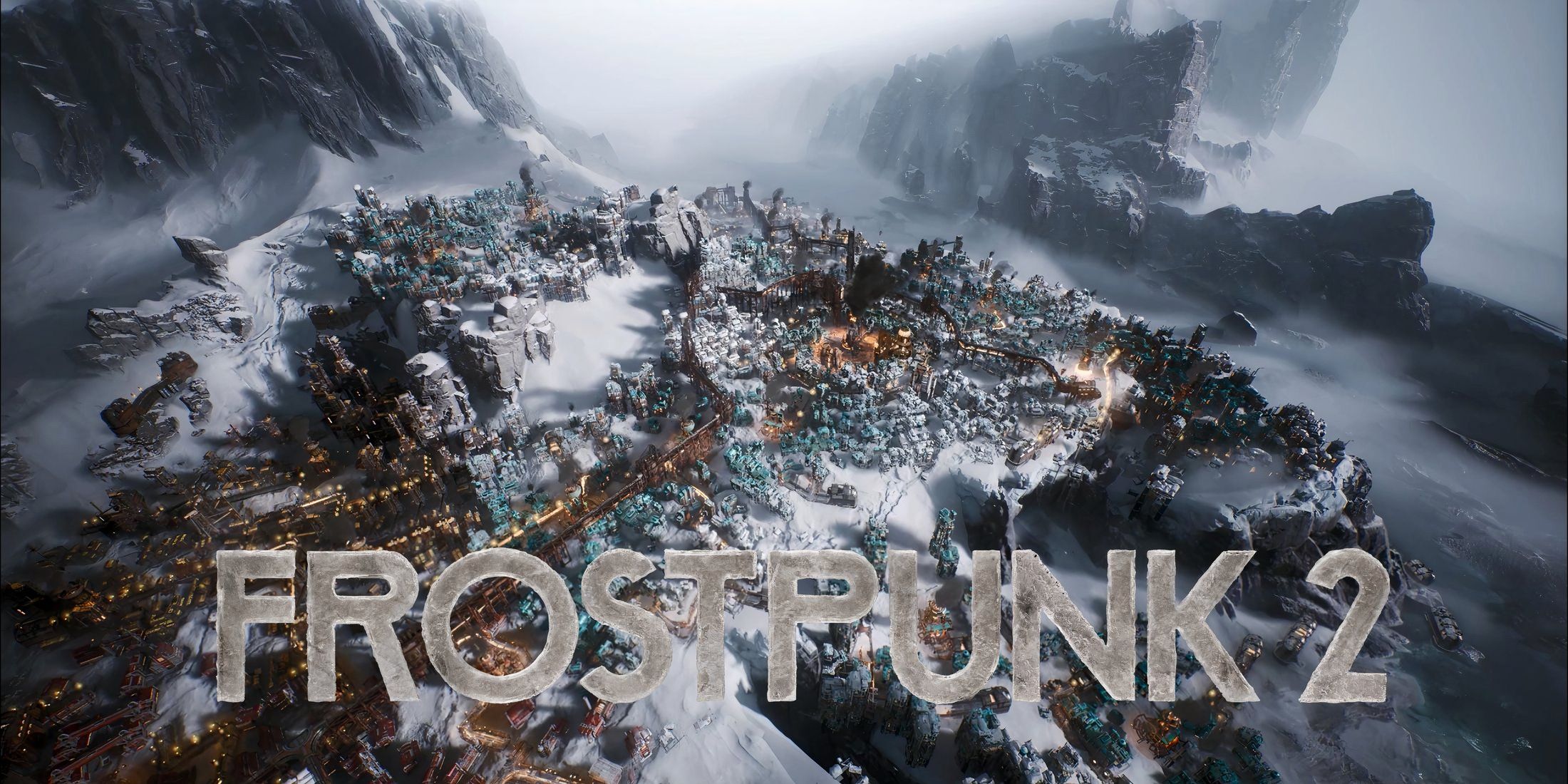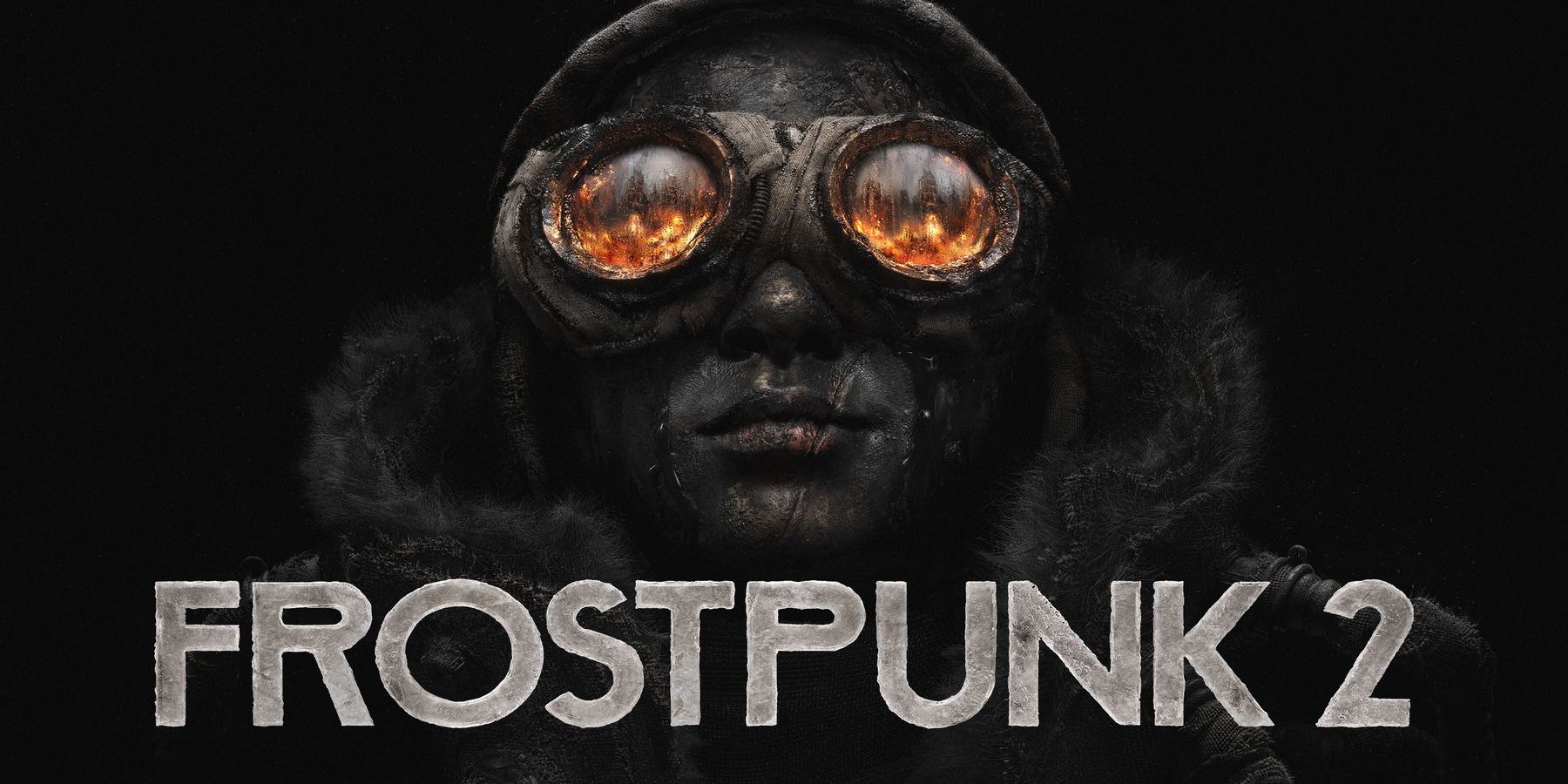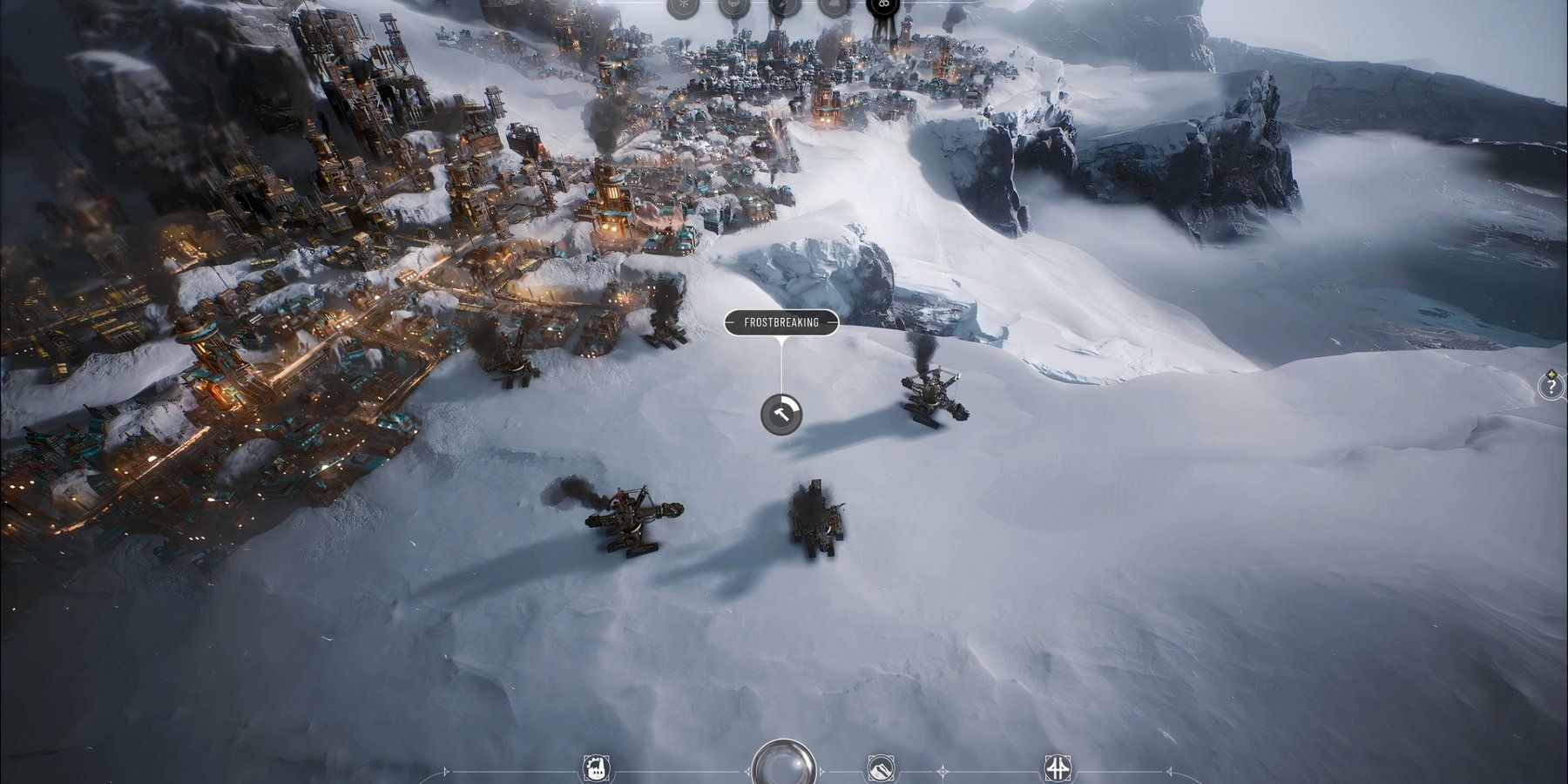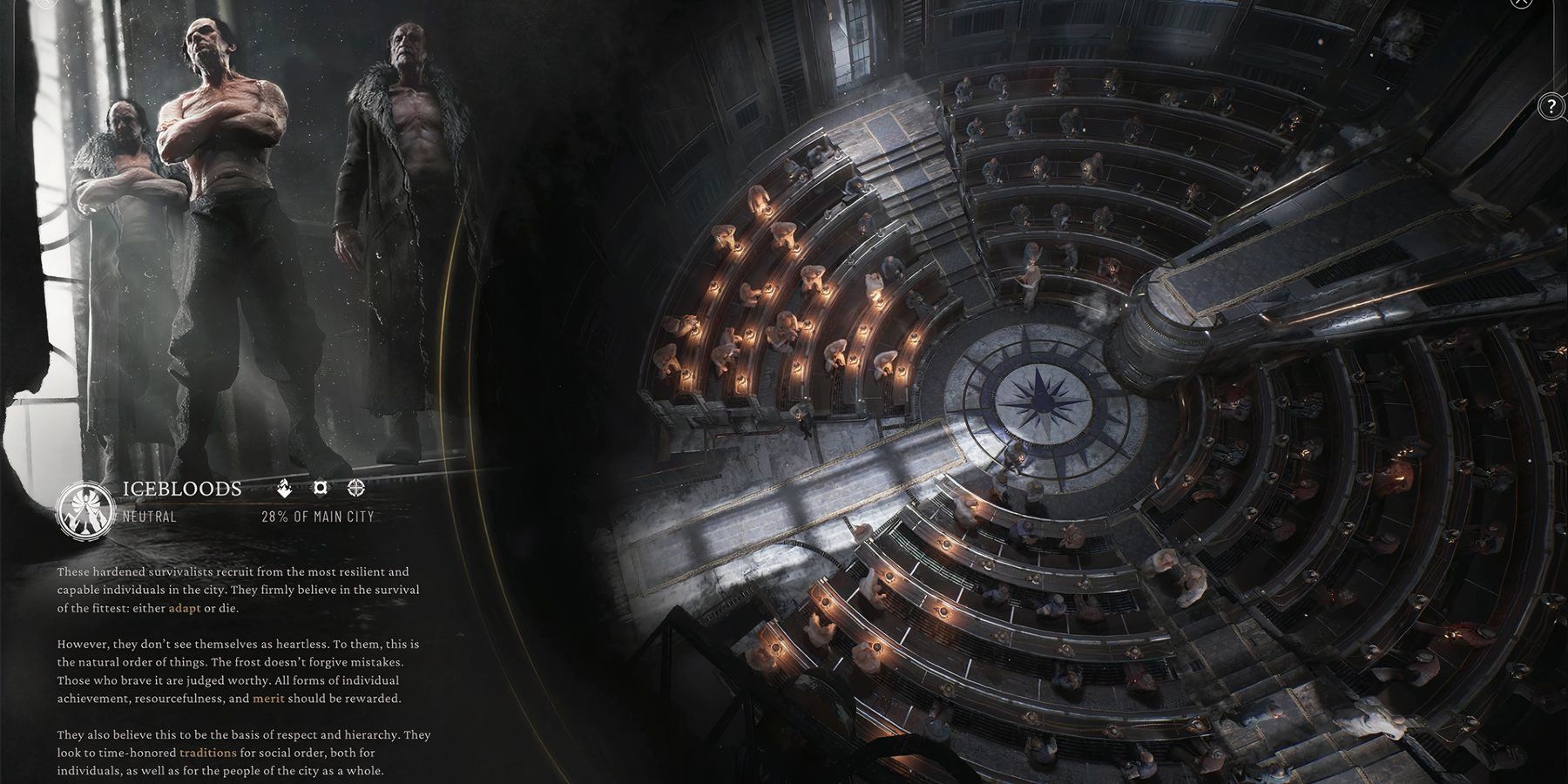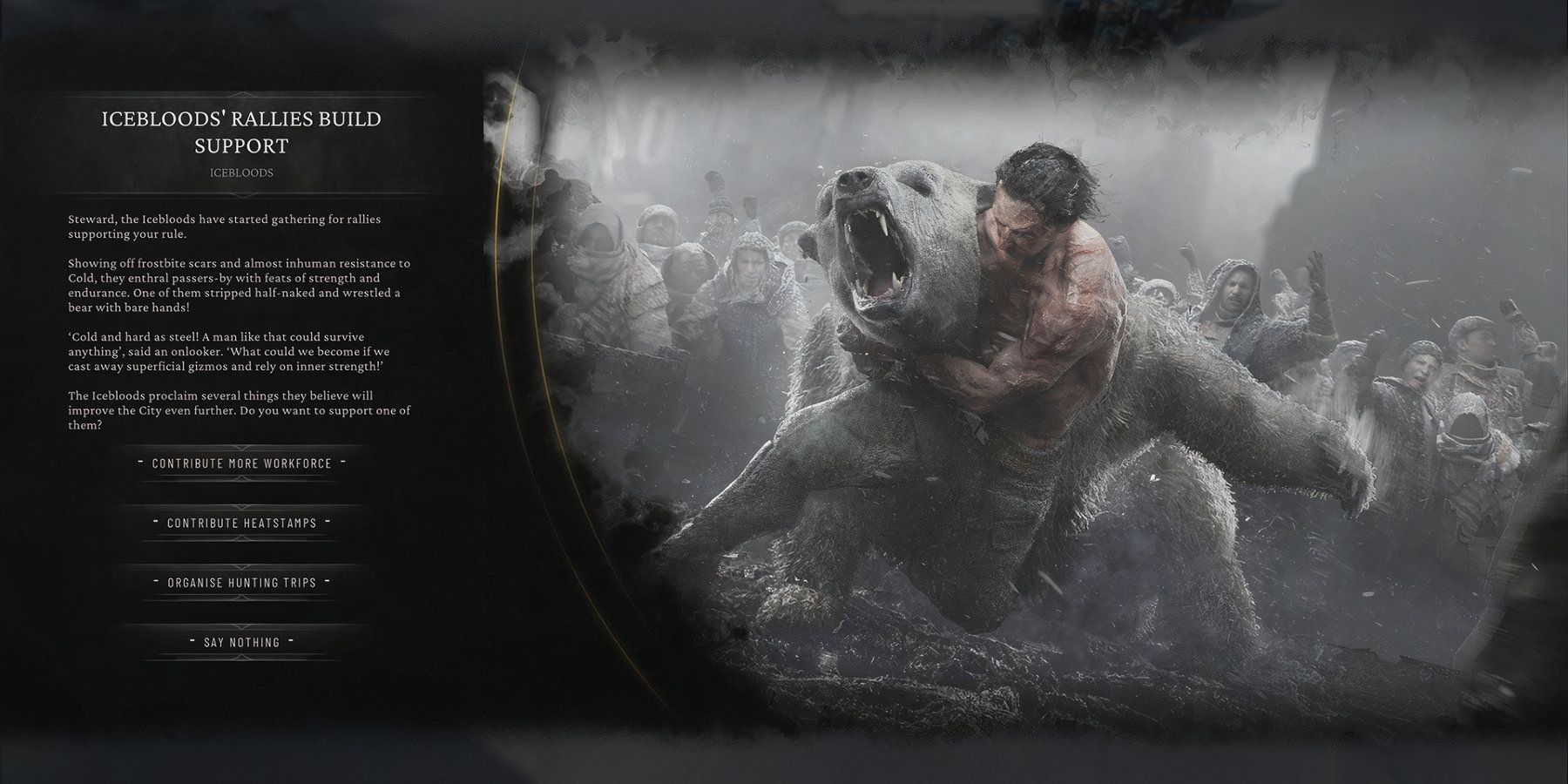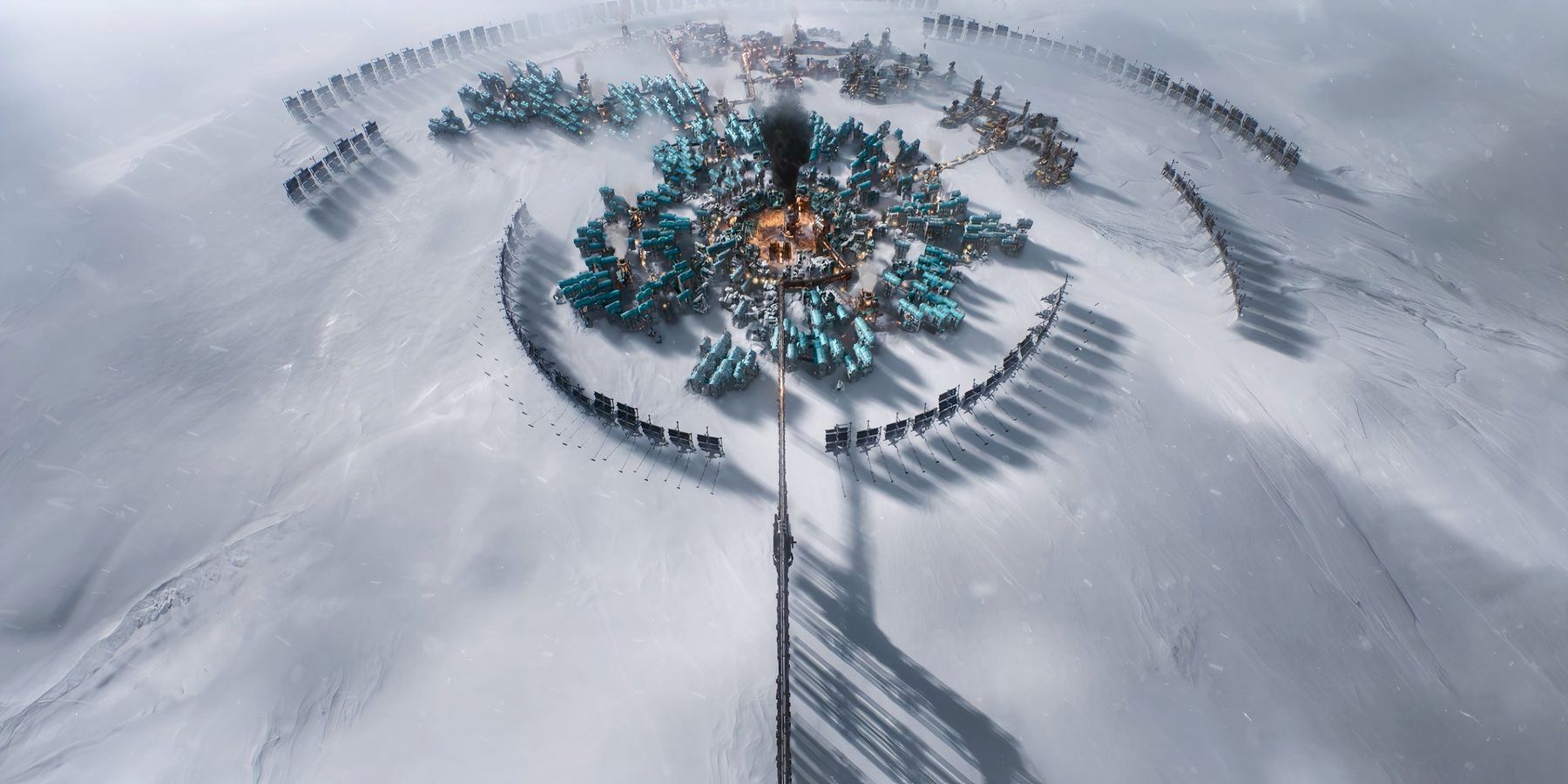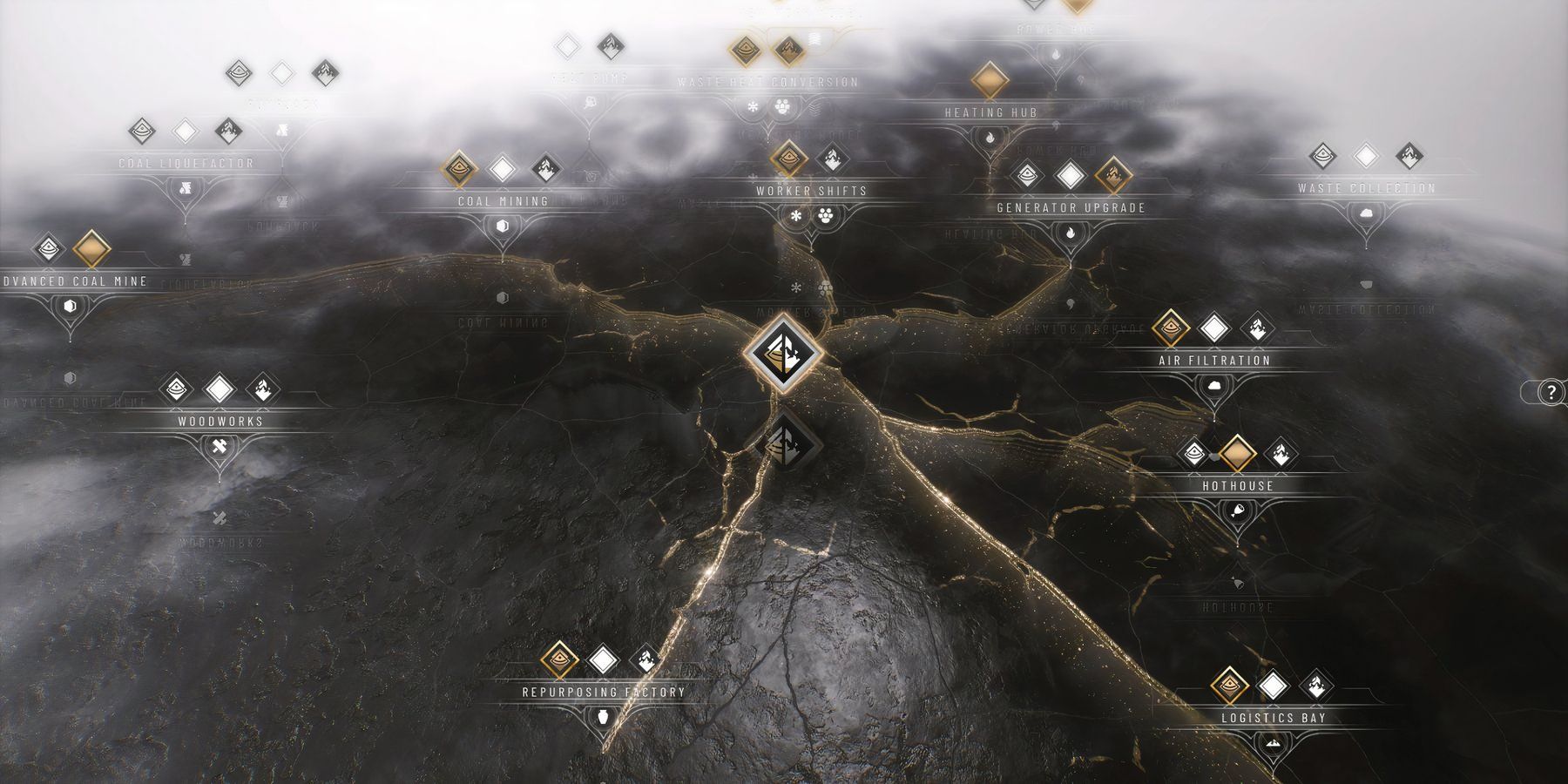Set 30 years after the first game, Frostpunk 2 is not just about helping humanity survive an icy wasteland, but guiding it toward some type of Utopia. Because of this, Frostpunk 2 also introduces more social turmoil as players seek to re-establish society by forging laws in the Council and navigating their city's various and often conflicting factions. While Frostpunk was a challenging survival game in many ways, Frostpunk 2 looks like it will be much more expansive, with more settlements to manage and opportunities for players to build their city on an exciting new scale.
A bigger sequel also meant more creative challenges and risks, as Game ZXC learned in an interview with Frostpunk 2's co-game director and design director Jakub Stokalski, who spoke more about this, its overall replayability, its various new systems, and much more. The following transcript has been edited for clarity and brevity.
The Creative Risks and Increased Scope of Frostpunk 2
Q: Earlier, you mentioned taking creative risks with this game. I was hoping you could expand on that?
A: Sure, absolutely. Well, if you played a bit, I guess you'd agree that we changed quite a lot from Frostpunk 1, right? Frostpunk 1 was a great success for us, and it was a great game. A lot of players liked it, but at the same time, it was never a given that Frostpunk 1 was going to be a world in which we want to base games. It was never set in stone that Frostpunk 2 would get made. It would be made only if we had a reason for it to be made. There had to be a reason and there had to always be a vision that says something unique and meaningful within the language of the game. What can the game say? For Frostpunk, it was how far are you willing to go to ensure that the city survives?
We couldn't just sit down and say, “Okay, let's do that again, but let's do three new scenarios, 50 new buildings, and you know, call it a day.” This is not the way we approach things at 11 bit studios. In order to actually make it happen, we had to go back to first principles and say, “Okay, so if you survive the end of the world at the end of Frostpunk 1, how do we meaningfully build on that? We could make a bigger storm, we could drop the temperature even lower," but that makes very little sense already, right? The question becomes “Now what?” You've got this blank slate, you've got these traumatized people formed by the ordeal of surviving the end of the world, and they actually start rebuilding now, wanting different things, and having ambitions now. But these ambitions diverge because of the different ways they were shaped by this ordeal of surviving the end of the world.
This vision as it coalesced in our minds, was “Okay, this is cool if we want to make a game about that." However, there is no way we can fit it into exactly the same building blocks that Frostpunk 1 was. We needed a bigger scale, we needed a bigger timescale as well. For all of that to make sense, we had to do all of these things. All the changes that you see naturally to us come from the first principle of saying what the vision for the game is, so it's not that we decided to change things for the heck of it. This was for us. This is the way to deliver this new thing we want to say with the game, and obviously it's a risk, right? Because it will be easy and safe to say well, “Okay, so let's just do more content for Frostpunk 1.” But at the end of the day, you know, we feel it would not really be satisfying to a lot of players. Maybe for some it would be, but to other players, they would say well, “Why is it not a DLC," right? "Why are you asking full price for basically an expansion pack for Frostpunk 1?” At the end of the day, we ended up preferring to worry about being too brave rather than too conservative, as I said on stage.
Scaling Up the Experience in Frostpunk 2
Q: That scale is definitely noticeable. Could you talk a little bit about that process of scaling it up?
A: Sure. The process really came from the vision side. If we want to tell a story about a society that starts being torn apart, or like pulled apart really, by what it wants from the world and how it tries to rebuild after this apocalyptic event, then how can we show that process in a believable way? We definitely needed more time for this to actually flourish. This is not going to happen over days and weeks, right? We need weeks, months, years, possibly to do that. If we need to do that, then some of the things that we've shown in Frostpunk 1, they're already not a thing, right?
For instance, people are born and die. On the scale of like, say 10 years, this is a process that you don't really notice anymore on the simulation level. This is basically just, let's say, the background of it all. If we need more timescale, if we want to still be a game about building and expanding a city, then we need a city building system that actually supports both the larger timescale and the larger geographical scale. Hence, the changes to the district building system. Step by step like that, if you think about which parts of the game need to change, we basically have to touch every part of the game right to support this new vision.
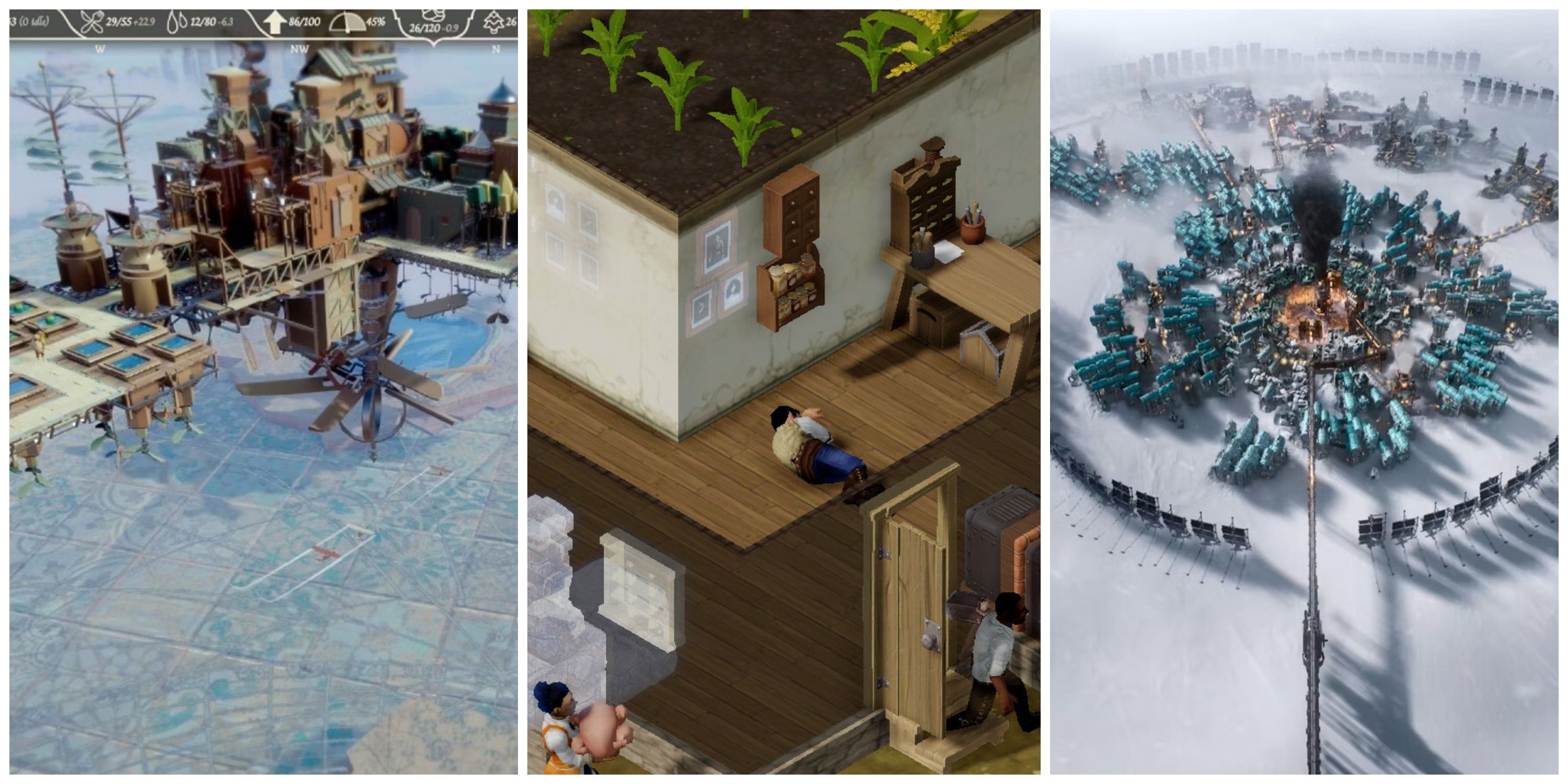
10 Settlement Builder Games With Unusual Settings
Building settlements and cities in these games is spiced up by the unique settings, from floating settlements in the skies to the red planet.
Q: You mentioned the geographical scale, and there's the Frostlands. Could you talk about what they add to the experience?
A: Well, obviously, the immediate expansion happens in the vicinity of the core city, but your resources are running out, as you're probably experiencing now. As people, we actually need to reach out. You need to find other places, and you can find them for different purposes. You can bolster your main city with resources that you find outside, but also, you can find other people maybe who survived out there who you can come in contact with. There's also other places that will be even more useful to you than just, you know, an outpost site. Have you reached the end yet?
Not yet. I did find the colony. I don't think I realized it right away, but you have to support the colony too, don’t you? I found the oil, sent them there, had them send the oil back, but didn't even think to look again. There's just a colony there now, so there's like multiple colonies you have to support?
A: Yes, exactly. This is th expansion that comes with the Frostlands. It's not only about a single city anymore. You can actually not only find and use it as it was in Frostpunk 1 and in beta, but you can actually settle other places. You have to then manage two and possibly even more locations at the same time. This is all of that part of this expansion.
Frostpunk 2's Replayability
Q: Could you talk a little bit about the various factions and all of that?
A: Sure. Which side did you choose? Do you get the Faith Keepers or the Stalwarts?
I had the Stalwarts.
A: All right, okay. Obviously, if you chose a different path in the prologue, you would have a different continuity from Frostpunk 1. We support both of these. Obviously, in this scenario and the story mode, we support New London, so the factions are based on the background and the lore of Frostpunk 1. Either you've got Stalwarts, who are the descendants of the Order from Frostpunk 1, and some new ones as well. For the Stalwarts, you get the Pilgrims who oppose them, so these are the factions we made for this scenario. In the Utopia Builder, there are a lot more of them. Also, the starting communities are different, and the factions are different, right? So if you play and replay the Utopia Builder, you can get a very different makeup of society.
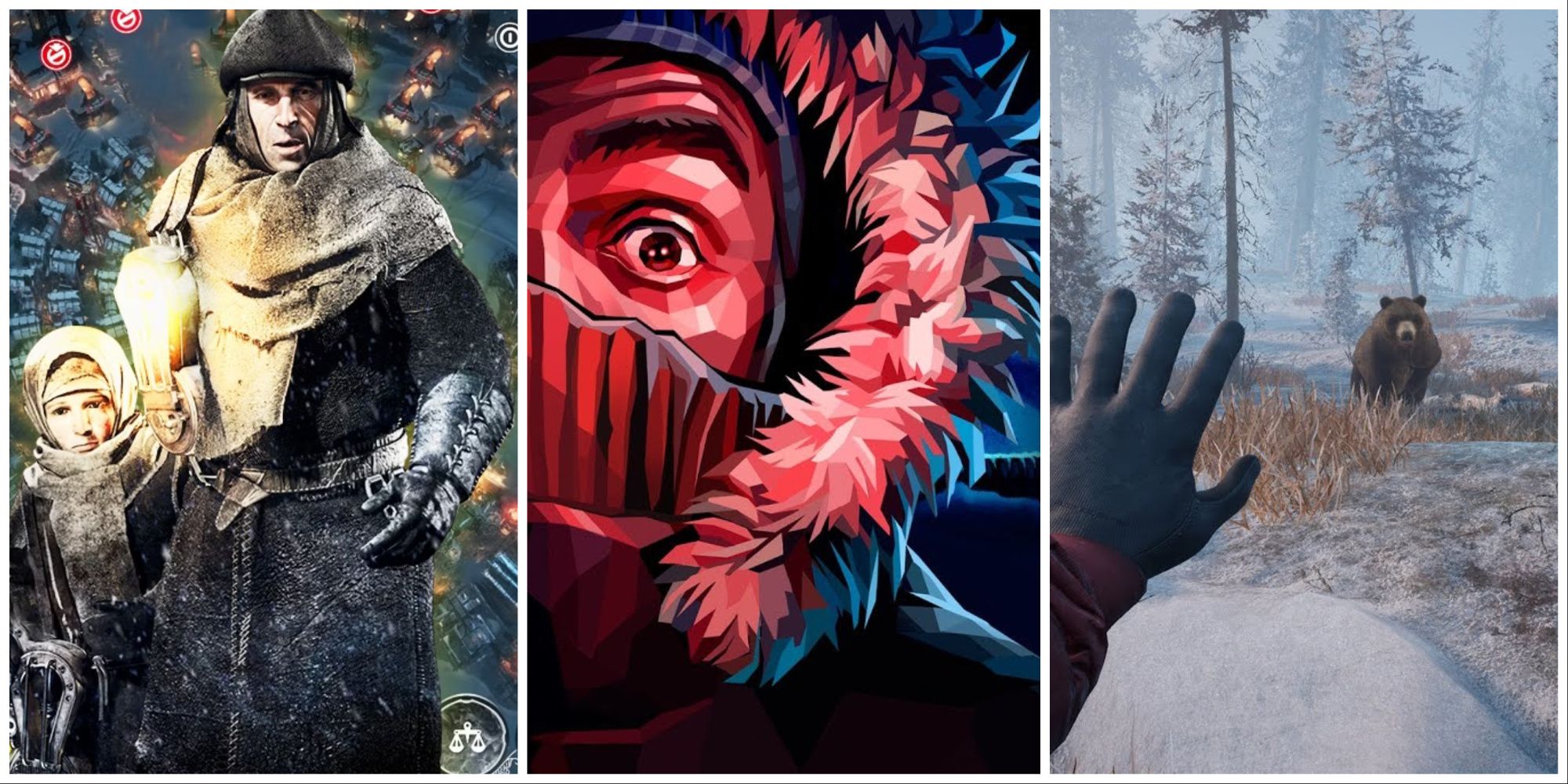
Against The Frost: 8 Games About Surviving An Icy Apocalypse
Players will have to put all of their skills to use to survive these icy environments.
Q: I know it's probably hard to answer, but when taking in all these factions, all these events, and all of that, how long do you think it would take someone to see everything they can?
A: Oh, that's a difficult question [laughs].
To tell you the truth, this game keeps surprising even us in terms of its scope, right? We're thinking, “Okay, so let's try to be smart about this. Let’s not go overboard, and we routinely go overboard [laughs].
In terms of pure playtime, I really don't know. You've been playing for two hours. You are about to complete the first chapter, and the story mode itself is composed of multiple chapters. You'd probably get a good dozen hours just to see one playthrough. If you chose a different thing in the prologue, you're going to get a different set of factions, so you might want to replay to see the different set of factions. As you wrap up chapter one, you're going to reach out a moment of a pivotal choice, not spoiling it for you, but if you make this choice, it sets up your second chapter to be a slightly different one than if you chose the other one. There's a bunch of replayability already built into the story mode, and that's on top of the Utopia Builder, which is an endless procedural randomized game mode.
When we playtest this in-house, we ask this question, “What size do you feel this game is in terms of hours, right?” We routinely get people saying, “Well, this is at least upwards of 5, 50, 100 hours easily, and it feels a lot larger than Frostpunk 1, definitely."
Frostpunk 2's Council Halls, Laws, and More, Oh My
Q: There's a whole bunch of new systems in the game. Could you talk a little bit about the Council Hall and how you navigated all of the systems?
A: Well, the Council itself is in the very first build. We said “Okay, what do we want to say about this divided society wanting to reconcile the future for themselves”. Well, the way to represent that is through a system like that. With the backstory of them being British, you know, it makes sense for them to come back to this type of system. The laws themselves both come from the types of laws that would be descendant from the Frostpunk 1 survival type of experience. Where do we get our food? How do we feed ourselves? What do we do with the children? The classic stuff, let's say. Then on top of that, all the rest are the rules or laws also that you would imagine them wanting to decide on how to do regular life-like things like, how do we work? What are the work shifts?
Deeper into the tree, as you go into the research, all of these are building up into a certain type of, well, you could call it a utopia, in a sense. Like a beautiful vision of a world where technological progress solves all of our problems. As with every utopia, it ends up being a dystopia for someone else, right? This is currently built into both the Council, the law systems, and the idea tree system, which feeds into the Council to have this descent into evermore powerful tools to solve your problems, but at an ethical cost possibly.
It's really interesting how they stack on top of each other. The research feeds into the laws, the laws feed into trust, trust feeds into the city. It is very systems intense.
A: Oh, yes. This is a part of the reason why we think it's going to be replayable because you’ll be able to master the systems as you should, but at the same time, the different behavior of the system can lead to very different situations in the game. We hope it will remain fun for a long while.
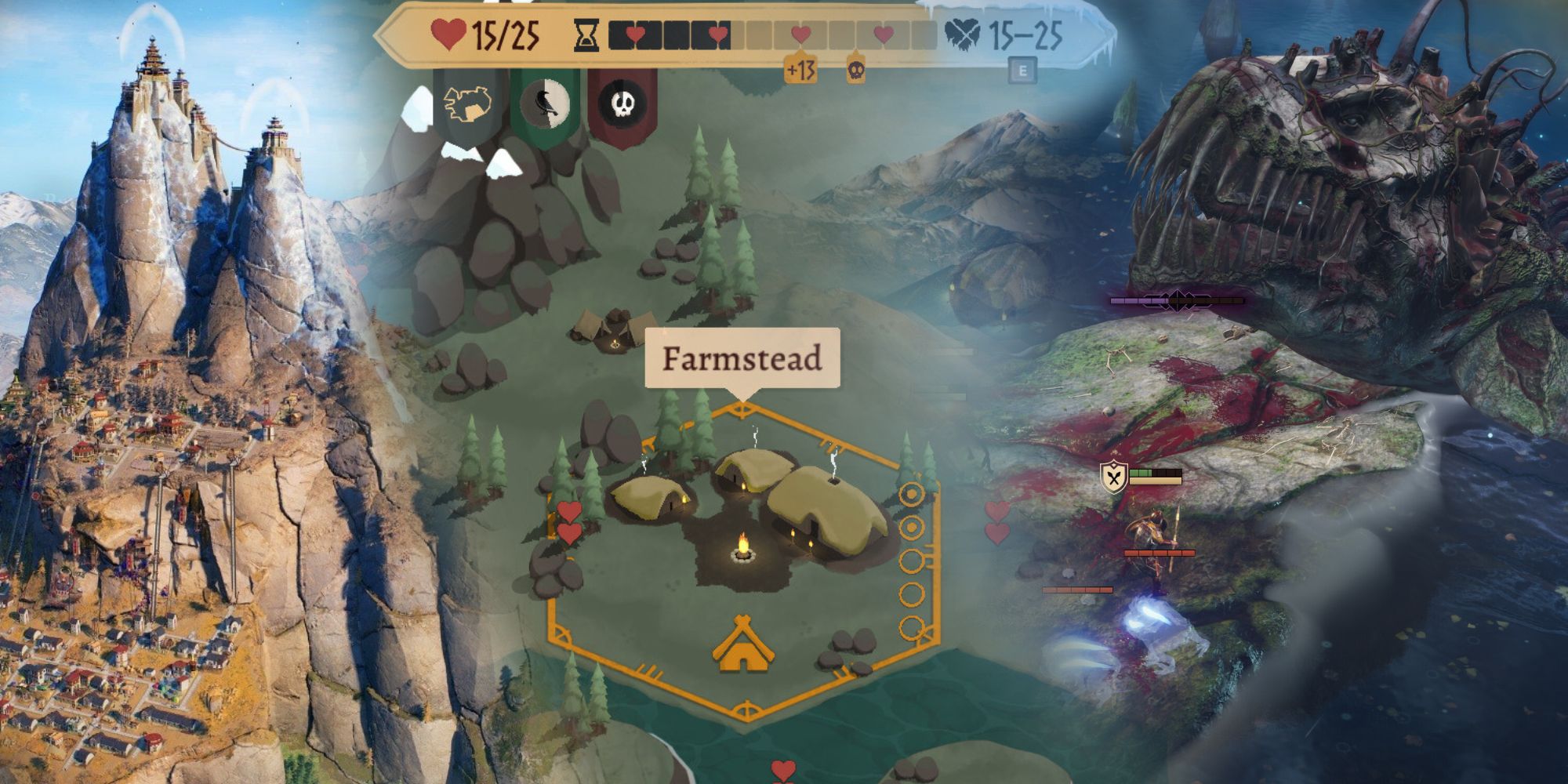
12 New City Building Sims To Watch Out For
Studios find new ways to refresh city-building sims, whether through mechanics, settings, or mixing genres.
Frostpunk 2's Post-Post-Apocalyptic Approach
Q: We've had the apocalypse, we've survived it in this post-apocalypse, and this is like post-post-apocalyptic. We don’t see a lot of post-post-apocalyptic a lot - do you have any insight as to why?
A: I don't know. I feel I've been giving it some thought – you know, especially comparing Frostpunk 1 and Frostpunk 2–because that's a very good point you're making in that Frostpunk 1 was very much an apocalyptic game. It was happening as the world was ending. Frostpunk 2, in a way, is a truly "post-apocalyptic" game because it's actually happening after the end of the world, right?
I think there's the allure of this great tragedy happening and therefore all conventions of society are gone. Everyone does whatever they need, and can you stay a good guy among all of that? This is a very easy and inciting story, right? It's a world to immerse yourself in, and there’s nothing wrong with that, absolutely. There are some of the great stories in there, but I think the post-post-apocalyptic story might be less explored because I think it's a somewhat more difficult subject, right? It's no longer about well, we can do whatever we need to do to survive, but it's about “Okay, so what is it about us as people, as a society, that we decide to build on in a constructive way,” rather than saying, “Oh, we can all be heroes and just survive, right? No strings attached.”
I think this is a more mature and more difficult conversation to have, right? It's like what are the things worth preserving? What are the things worth building on? Rather than "What do I have to do to just live through this next day?”
Q: Is it possible to even make everyone happy? Is there some sort of God Mode, perfect decisions where everyone loves you?
A: There are two ways - there's one and a half way, let’s say. If you've noticed in the Council, there is this fourth tab called Rule. It’s black, and it's blocked for the demo, right? You cannot play it yet, but it's there. It shows you all of these tools where you can basically make people get together and get along. This is the path of the captain, of going back to authoritarian rule really.
Frostpunk 1 was about an authoritarian ruler, right? You decide and everyone did what you decided. It's part of this post-apocalyptic thing I just mentioned. In Frostpunk 2, there is a way for you to say "I'm right" if you're really tried of all these communities and factions, if you want to say they're stupid and don't see the big picture. You have the tools to follow your instinct there and make them see your way, let's say, but if you don't want to become that type of person, you have to want to make people come together. There's no silver bullet, right? Personally, this core meaning of the game itself. You have to push this ideas every step of the way and make sure you're not making any big moves, basically. You're trying to make the right choices every step of the way, but there is no point at which you can say the work is done. Humans will always be humans, and there's always something that can offend us if we're not careful about it, basically.
Q: On the opposite side of that, can you just like focus on making like one faction happy?
A: Oh, you definitely can do that. You can totally pick a side and stick with them. That way, obviously, the other ones aren't going to be super unhappy about that. If you're consistent and if you're playing well, you can work around that. You can use your guys to suppress the other factions. You can make sure that your laws pass with the support of those that you picked, and you can denounce the other guys, put them in prisons, things like this, right? You can totally do that. If this is your way of playing, sure, it's a way of playing, but it's definitely not the only way of reaching success.
Q: When constructing the city districts and expanding that scale, how did you go about making sure it still felt like Frostpunk?
A: Well, to us, there's a certain set of traits that we feel Frostpunk is what it is, right? It's definitely this narrative focus, but I think one of the single pillars that is always central to us is the mood of the game. Mood is this term we use - it's a bit of an ambiguous term - but it's basically the thing we use to say that the art, the design, the gameplay, and the mechanics click together in a way that feels recognizably this story, this world of Frostpunk.
I don't know, we could have a completely different genre, right? We could have a racing game that would still work through making it a proper mood. We could still make it sit well within what the world of Frostpunk is, but obviously, we're not that far off with Frostpunk, thankfully. But really, it's about making sure that you're being pressured, you have this feeling of just one step away from losing control, that the game is challenging, but it gives you a fair challenge at the same time - that you do not feel cheated at any point along the way. That, and it's still cold with all the ways the game presents itself and the art. It has to have this vibe of being in this cold, post-apocalyptic world. If you're doing a good enough job delivering those, it will feel like Frostpunk at the end, regardless of the change of any specific detail that we make to the game.
Q: In what ways do you think you've probably expanded on the core Frostpunk idea the most with resources?
A: Well, I think, speaking to this change of scale, there's the fact that most of those are actually supply and demand. You probably noticed that. It's not all about stockpiling enough firewood to build a tent. That wouldn't support this change of scale in the sense that the city continuously demands a pool of resources to support the different districts or buildings that you build. At the same time, these districts produce some resources, so this whole economy really is based on how much you can meet the demand that you decided for the city to have through your choices. And at the same time, still manage to expand it, right? You can go into the red for a while, but if you go there for too long, obviously your people will suffer. This is a balancing act - expanding the city, ensuring you have what it needs to grow, but at the same time, keeping this economy supplied and balanced.
[END]
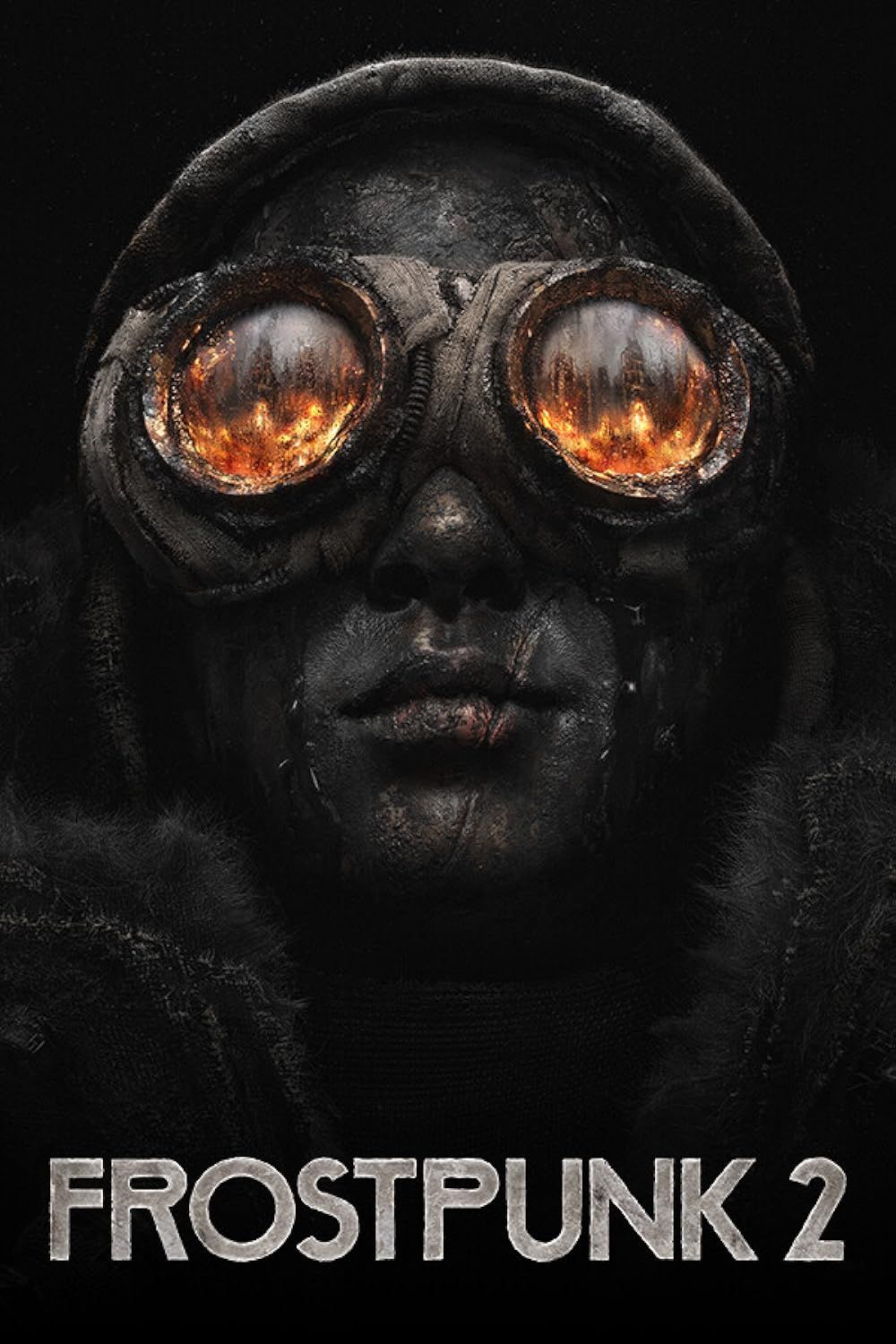
Frostpunk 2
11 bit studios' Frostpunk 2 blends city-building, survival, and strategy mechanics as it challenges players to survive on a post-apocalyptic Earth with power-hungry humans.
- Platform(s)
- PC , PS5 , Xbox Series X , Xbox Series S
- Developer(s)
- 11 Bit Studios
- Released
- July 25, 2024
- Publisher(s)
- 11 Bit Studios


